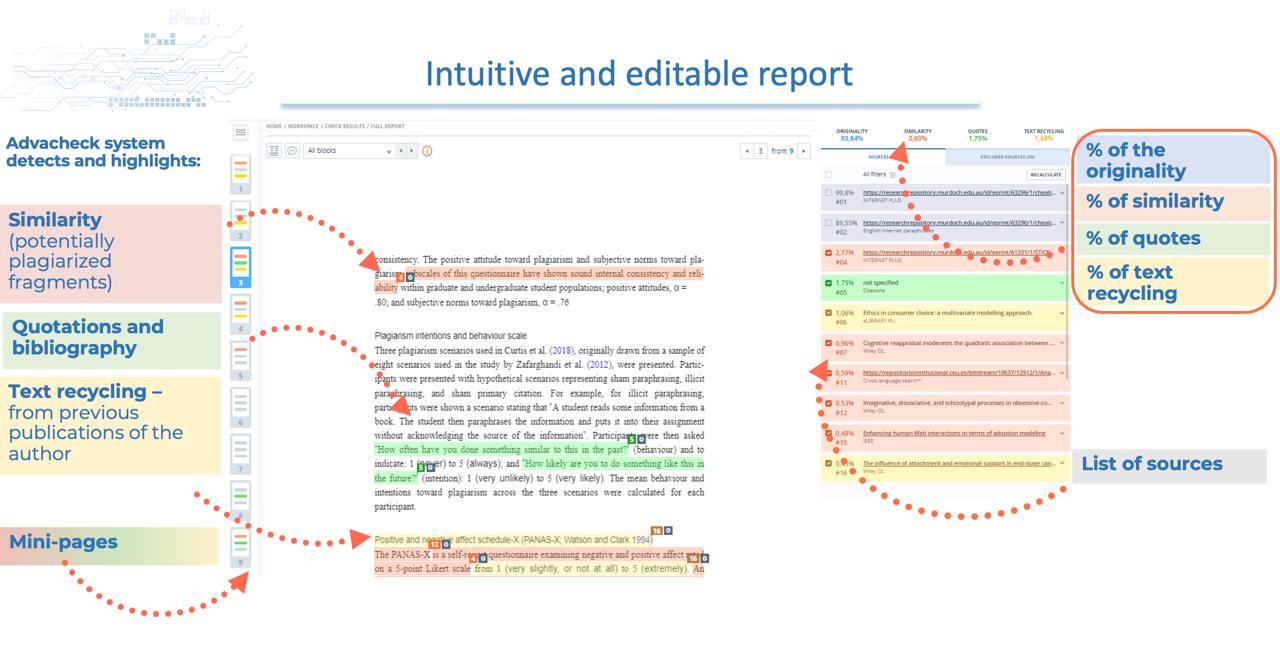
Plagiarism is presenting someone else’s work, ideas, or intellectual property as your own without proper acknowledgment or citation. For instance, copying text without quotation marks or attribution, submitting work created by others (e.g., essays, code, designs), or reusing your previously published work without disclosure (self-plagiarism).
Plagiarism is a critical issue in academia since it leads to violations in intellectual integrity, unfair advantage, compromised credibility, as well as legal and ethical consequences. Academic integrity is the foundation of ethical scholarship, emphasizing honesty, transparency, and accountability. Plagiarism directly attacks these principles by devaluing original work, distorting research quality, and undermining institutional trust.
Nowadays, plagiarism is not just a minor infraction; it threatens the very essence of academia. Upholding academic integrity ensures that knowledge advancement remains ethical, credible, and equitable. In the article, we’ll discuss how to check if something is plagiarized and consider related issues.
Common Forms of Plagiarism
Plagiarism, the act of using someone else’s work without proper acknowledgment, comes in several forms. Below, there are three primary types, each illustrated with examples from student writing contexts:
- Direct copying and pasting. It occurs when text is taken from a source in its original form and inserted into one’s work without quotation marks, attribution, or both. If students copy and paste content word-for-word, it is considered direct plagiarism.
- Paraphrasing without citation. Paraphrasing involves rewording someone else’s ideas. However, failing to credit the original source still qualifies as plagiarism. For instance, the original source: “Social media algorithms prioritize content that sparks emotional reactions, often amplifying misinformation.” Student’s version is: “Algorithms on social platforms favor posts that elicit strong emotions, which can spread false information more widely.” Though rephrased, the core idea is borrowed without a citation, misleading readers into believing the analysis is the student’s own.
- Presenting someone else’s work as one’s own. This involves submitting all works created by others, such as essays, articles, documents, or designs, under one’s name. For example, a student downloads a pre-written essay on Shakespeare’s Macbeth from an online database and submits it as their original work for a literature class. Alternatively, they might reuse a peer’s unpublished paper on climate change without permission.
Each form misrepresents intellectual ownership, undermining academic integrity. By recognizing these examples, students can better avoid unintentional breaches and uphold ethical scholarship.
How to Check for Plagiarism in Student Papers with Advacheck?
Advacheck is a powerful plagiarism detection tool designed to ensure academic integrity by identifying unoriginal content in student submissions. It uses advanced technology and modern tools for content checking. Here’s how to spot plagiarism in its various forms:
- Comprehensive source comparison. Advacheck scans submitted text against two primary databases:
- Internet sources: Publicly available web pages, articles, blogs, and forums.
- Academic databases: Proprietary repositories of scholarly journals, theses, research papers, and previously submitted student work.
- Advanced algorithmic detection. The tool employs sophisticated algorithms to detect exact matches, partial matches, and paraphrased content, even when wording is altered. Key features include:
- Phrase-level analysis that identifies strings of text that mirror existing sources, even if minor changes (e.g., synonyms or reordered sentences) are made.
- Contextual similarity that flags content that shares the same structure or meaning as source material, even without verbatim copying.
- Cross-language detection that scans for translated plagiarism by comparing text against sources in multiple languages.
- Highlighting and reporting. After scanning, Advacheck generates a detailed report that:
- Color-codes matches:
🔴 direct copies — red;
🟡 partial matches — yellow;
🔵 cited or quoted content — blue. - Provides source links: Shows URLs or academic references where matched content originated.
- Calculates similarity percentage: Offers a clear metric (e.g., 25% similarity) to gauge the originality of the work.
- Color-codes matches:

Advacheck stands out due to its sensitivity to subtle plagiarism. It detects disguised plagiarism (e.g., synonym swapping, or sentence restructuring). Besides, it provides real-time updates; databases are continually updated with new online and academic content. The software has a user-friendly interface because clear visual reports make it easy for instructors and students to understand results.
In addition, the Advacheck plagiarism detection tool performs a thorough structural analysis of the document, giving users the ability to exclude irrelevant sections from the analysis process.
Manual Methods for Spotting Plagiarism
While plagiarism detection tools like Advacheck streamline identifying unoriginal content, educators can also use manual strategies to spot plagiarism, inconsistencies, or red flags in student work. These methods rely on critical observation and familiarity with students’ writing habits, serving as a complementary layer to ensure academic integrity. Here are the key manual approaches:
- Inconsistent writing styles. Teachers can detect plagiarism by noticing abrupt tone, vocabulary, or complexity changes within a single paper.
- Sudden shifts in quality. Unexplained improvements or declines in writing quality can signal plagiarism.
- Formatting or contextual inconsistencies. Plagiarized content may clash with the assignment’s requirements or the student’s knowledge level.
- Familiarity with student patterns. Teachers used to know a student’s typical voice, strengths, and weaknesses to spot anomalies.
- Cross-checking suspicious content. Manually verifying questionable sections can uncover plagiarism.
Manual methods empower educators to act as “human detectors” by improving their expertise and familiarity with student work. These strategies create a robust defense against plagiarism, improving a culture of originality and accountability.
Sum up
Plagiarism remains a significant challenge in education, but teachers can ensure academic integrity with the right tools and strategies. Educators can foster a culture of honesty and originality by using plagiarism checkers and educating students on proper research practices.
Educators should address plagiarism by educating students about academic integrity and proper citation practices. When plagiarism is detected, providing constructive feedback and guidance is essential.
Start using Advacheck today to protect your institution’s integrity, guide your students toward proper citation practices, and foster a classroom culture of honesty and originality!








